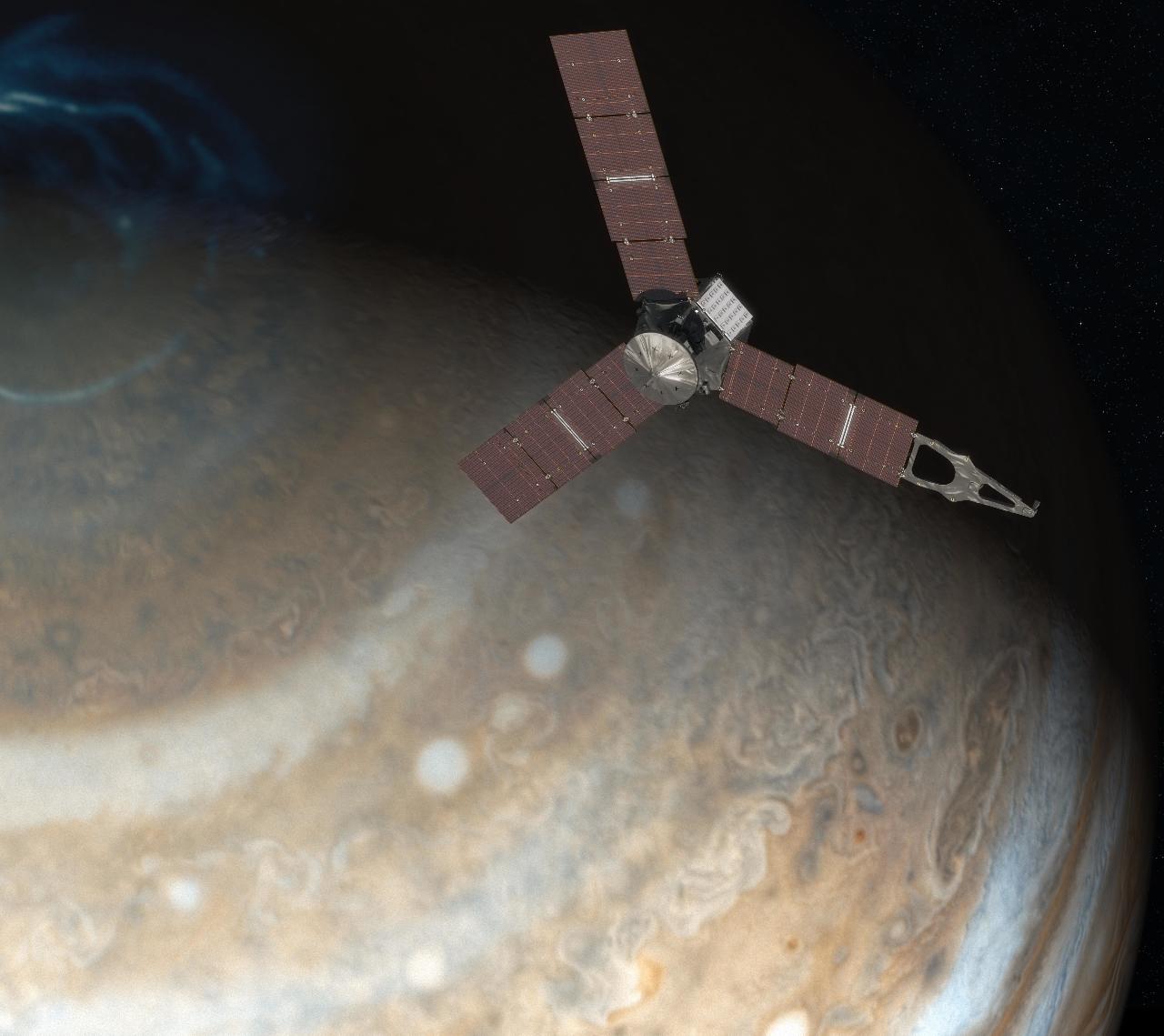After an almost five-year journey to the solar system’s largest planet, NASA's Juno spacecraft successfully entered Jupiter’s orbit during a 35-minute engine burn in the early hours of Tuesday 5th July. Confirmation that the burn had completed was received on Earth at 2:53 a.m. UTC. Juno becomes the second spacecraft to orbit Jupiter, after Galileo in 1995.
Confirmation of a successful orbit insertion was received from Juno tracking data monitored at the navigation facility at NASA's Jet Propulsion Laboratory (JPL) in Pasadena, California, as well as at the Lockheed Martin Juno operations centre in Littleton, Colorado. The telemetry and tracking data were received by NASA's Deep Space Network antennas in Goldstone, California, and Canberra, Australia.
Preplanned events leading up to the orbital insertion engine burn included changing the spacecraft’s attitude to point the main engine in the desired direction and then increasing the spacecraft’s rotation rate from 2 to 5 revolutions per minute (RPM) to help stabilize it..
The burn of Juno’s 645-Newton Leros-1b main engine began as scheduled, decreasing the spacecraft’s velocity by 1,212mph (542m per second) and allowing Juno to be captured in orbit around Jupiter. Soon after the burn was completed, Juno turned so that the sun’s rays could once again reach the 18,698 individual solar cells that give Juno its energy.
Juno will orbit Jupiter for 20 months, completing a total of 37 orbits. It is currently in a 53.5-day capture orbit. By the start of the primary science collection mission in November, the spacecraft will have shifted to a 14-day orbit. To avoid the highest levels of radiation in the belts surrounding Jupiter, mission navigators have designed a highly elliptical polar orbit that approaches the gas giant from the north, coming as close as 4,900 miles (7,900km) above the cloud tops. The mission will end with the craft being de-orbited into Jupiter in February 2018.
Over the next few months, Juno’s mission and science teams will perform final testing on the spacecraft’s subsystems, final calibration of science instruments and some science collection.
Juno's principal goal is to understand the origin and evolution of Jupiter. With its suite of nine science instruments, Juno will investigate the existence of a solid planetary core, map Jupiter's intense magnetic field, measure the amount of water and ammonia in the deep atmosphere, and observe the planet's auroras. The mission also will let us take a giant step forward in understanding how giant planets form and the role these titans played in putting together the rest of the solar system. Jupiter also can provide critical knowledge for understanding the planetary systems being discovered around other stars.

